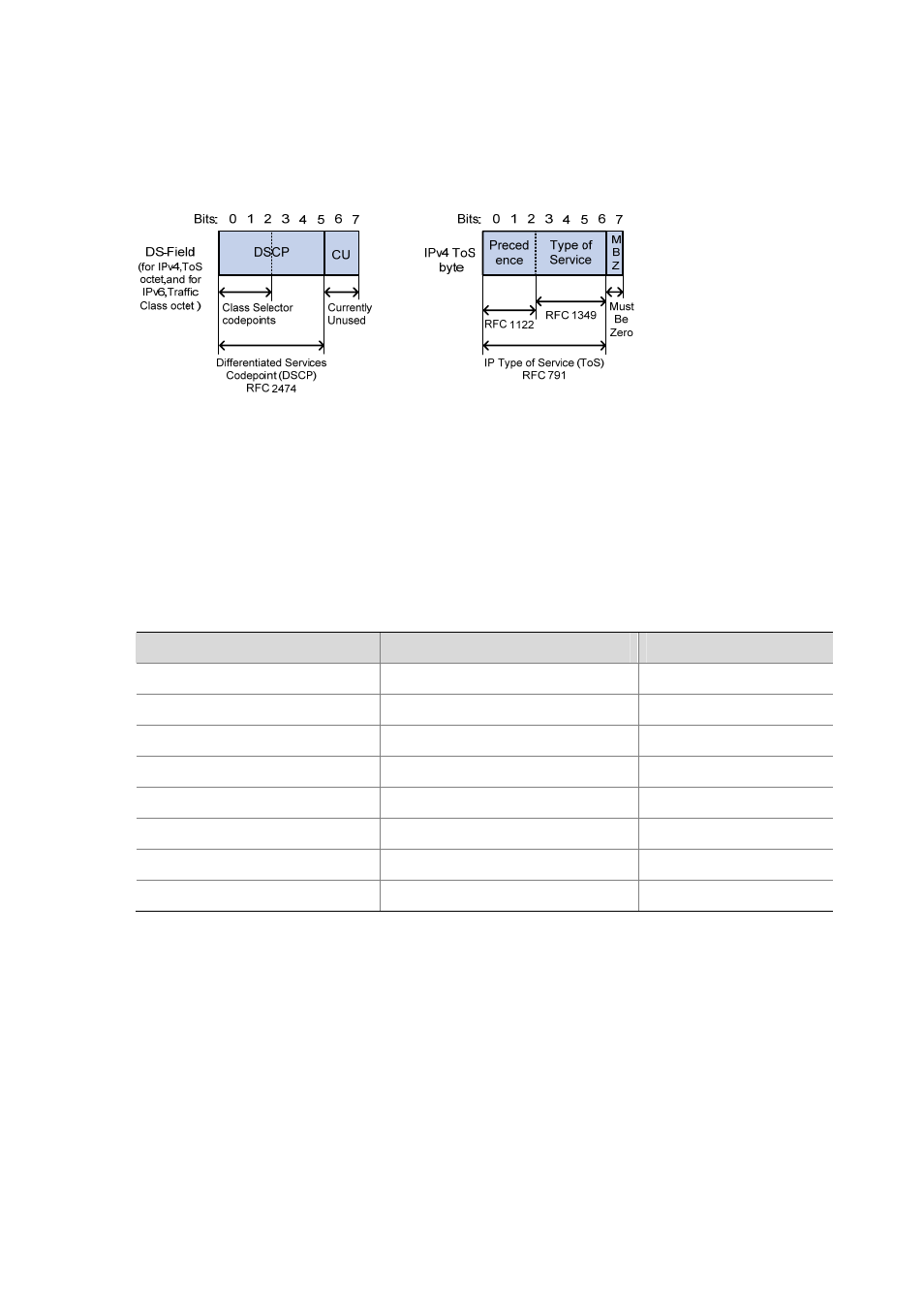Priority trust mode, Precedence types – H3C Technologies H3C S3100 Series Switches User Manual
Page 583

1-4
Priority Trust Mode
Precedence types
1) IP precedence, ToS precedence, and DSCP precedence
Figure 1-2 DS field and ToS byte
The ToS field in an IP header contains eight bits numbered 0 through 7, among which,
z
The first three bits indicate IP precedence in the range 0 to 7.
z
Bit 3 to bit 6 indicate ToS precedence in the range of 0 to 15.
z
In RFC2474, the ToS field in IP packet header is also known as DS field. The first six bits (bit 0
through bit 5) of the DS field indicate differentiated service codepoint (DSCP) in the range of 0 to 63,
and the last two bits (bit 6 and bit 7) are reserved.
Table 1-2 Description on IP Precedence
IP Precedence (decimal)
IP Precedence (binary)
Description
0 000 Routine
1 001 priority
2 010 immediate
3 011 flash
4 100 flash-override
5 101 critical
6 110 internet
7 111 network
In a network providing differentiated services, traffics are grouped into the following four classes, and
packets are processed according to their DSCP values.
z
Expedited Forwarding (EF) class: In this class, packets can be forwarded regardless of link share
of other traffic. The class is suitable for preferential services with low delay, low packet loss ratio,
low jitter, and assured bandwidth (such as virtual leased line);
z
Assured forwarding (AF) class: This class is further divided into four subclasses (AF1/2/3/4) and a
subclass is further divided into three drop priorities, so the AF service level can be segmented. The
QoS rank of the AF class is lower than that of the EF class;
z
Class selector (CS) class: This class comes from the IP ToS field and includes eight subclasses;
